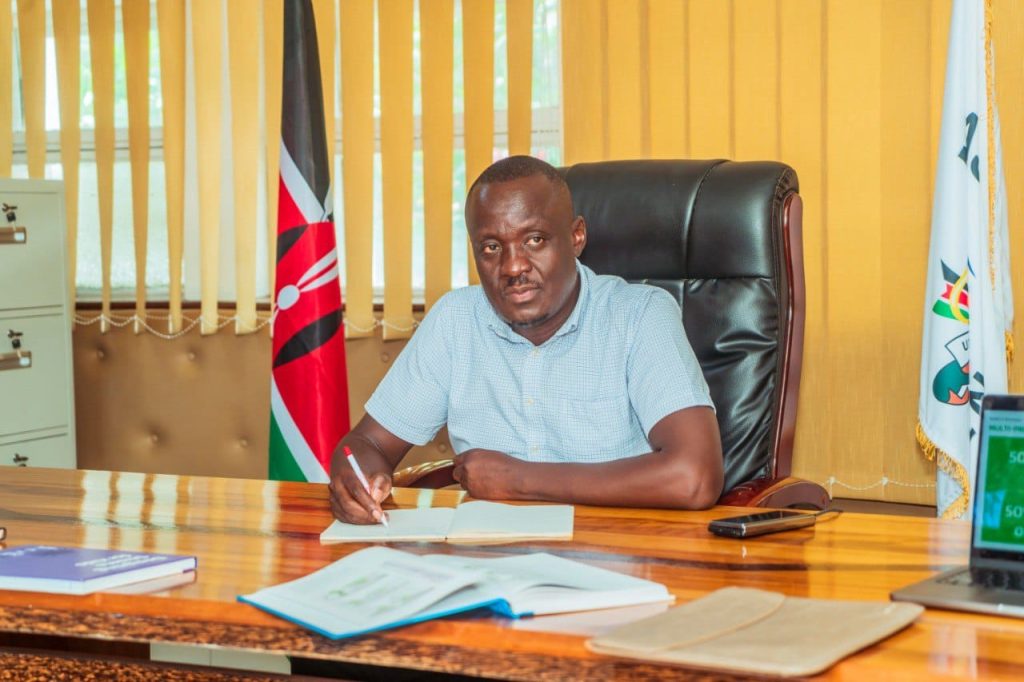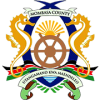Transport, Infrastructure & Governance
Vision
To provide safe, efficient and sustainable infrastructure and transport services.

Mission
A world class infrastructure and transport services for sustainable socio-economic development of Mombasa.


Mr. Daniel Manyala
CECM - Transport, Infrastructure & Governance

Mr. Daniel Manyala
CECM - Transport, Infrastructure & Governance
His expertise lies in capacity building, mentoring, and transforming average teams into high-performing achievers. A natural leader, he emphasizes strategic relationships as a cornerstone for long-term success.
Trained as a scientist, Hon. Manyala brings a unique blend of leadership, collaboration, consensus-building, resource mobilization, and analytical skills to the table. These qualities have positioned him as an exceptional team player, capable of not only formulating but also guiding the policy and strategic direction of organizations.
His professional journey began in the Oil and Gas sector, where he climbed the ranks from a Graduate Trainee to a Regional Business Development Strategist. His extensive corporate experience, accumulated between 2004 and 2021, has equipped him with deep insights into business development and organizational growth.
A visionary leader, Hon. Daniel Manyala continues to inspire and drive progress, leveraging his wealth of experience to create impactful change and sustainable development.

Eng. Ali Abdulrahman
Chief Officer - Transport, Infrastructure, and Public Works

Eng. Ali Abdulrahman
Chief Officer - Transport, Infrastructure, and Public Works
He is a passionate advocate for leveraging IT and engineering solutions to improve the lives of others. A professional programmer by training, He possesses expertise in Java web technology frameworks, including Hibernate and Spring, as well as knowledge of databases and Android mobile programming. He is a member of the Institute of Engineers of Kenya.
He has dedicated six years to serving the Mombasa County Government. Prior to his current role, he served as the County Chief Officer for Lands, Urban Planning, and Housing from July 2023 to July 2024.
He also held the position of Director of Operations and Services from July 2019 to July 2023, having served as Acting Director of Operations and Services from January 2019 to June 2019.
Before joining the executive branch, he contributed to the Mombasa County Public Service Board as an Assistant Director of Board Operations from December 2016 to December 2018.

Mr. Jibril Maalim
County Chief Officer - Governance

Mr. Jibril Maalim
County Chief Officer - Governance
Socio-economic Development
The department of transport and infrastructure is charged with the responsibility of taking care of and maintaining the roads, infrastructure including drainage, foot Paths Street lighting, and traffic lights among others.
In the last five years, after the introduction of devolution we have achieved a lot and constructed more roads than ever before. We have constructed over 100km of roads.We have also installed many street lights than any other time in history. The drainage system has to some extent been done depending on the allocation of funds considering that this is a capital intensive undertaking
Objective
To enhance infrastructure development, public service delivery, and safety through efficient administration, transportation systems, public works, mechanical and electrical services, and risk management, ensuring sustainable economic and social development.

Department Functions / Roles
Functions as assigned by Constitution of Kenya – Schedule 4b
From Schedule 4b of the Constitution of Kenya 2010, functions and powers of the county (under the Department) are :-
- County transport, including-
- County roads;
- Street lighting;
- Traffic and parking;
- Public road transport; and
- Ferries and
harbors, excluding the regulation of international and national shipping and matters related thereto.
2. County public works and services, including- - Storm water management systems in built-up areas; and
- water and sanitation.
3. Firefighters services and disaster management.
Core Functions & Mandate
The importance of infrastructure for sustained economic development is well recognized. We are well aware that transaction costs arising from inadequate and inefficient infrastructure can prevent our economy from realising its full growth potential regardless of the progress on other fronts.
S/No
Directorate
Section.
Mandate.
1.
General Administration and Support Services.
- To provide support services of the sector and management of the sector through giving managerial & administrative leadership.
- To coordinate the sectorial functions such as personnel, operations and capacity building.
- Enhancing Departmental capacity and conducive work environment for quality service delivery.
- Development of bills, studies and designs to ensure delivery of the Departmental mandate.
- Coordination of the collection and enhancement of Departmental revenue.
2.
Roads
Construction and Maintenance of Roads, Storm water Drainage, Bridges.
- Formulation and enforcement of County roads policy.
- Planning, design, develop and maintain county roads to standards that will enhance efficient transportation of people goods and services.
- Planning, design, construction/supervision and maintenance of County roads (main link roads, urban and access roads).
- Planning, design, develop and maintain bridges and crossing structures to enhance safe passage of both vehicular and pedestrian through obstacles.
- Planning, design, construction and maintenance of car and bus parks.
- Protection of county road reserves.
- Development and maintenance of storm water drainage in buildup areas.
- Planning, design, construction and maintenance of public non-motorized transport infrastructure (Pedestrians, Cyclists, Hand Carts, etc.)
- Ensuring that the quality of county road works is in accordance with nationally set standards.
- Resource mobilization for development and maintenance of county roads.
- To offer Engineering advise to private developers.
Liaison with National and other Agencies in the planning, design and implementation of roads and transport systems within the county.
3.
County Public Works
The specialized professional services which are carried out through various divisions namely Architectural, Structural, Electrical, Mechanical, Building Maintenance and Quantities & Contracts are: –
- County public works policy development and enforcement.
- County public works planning.
- Technical support to County Departments relating to all County Public Works and services.
- Design, construction and maintenance of County public buildings and Institutions.
- Provision and overseeing provision of services in Architecture, Structural & Civil Engineering, Mechanical & Electrical Engineering (building services) and Quantity Surveying for public buildings and facilities.
- Overseeing provision of mechanical and electrical (Building) services to public buildings.
- Inspection and approval of all structural plans both by private developers and public institutions to ensure adherence to specifications.
- Audit of buildings to conform to all standards of healthy human habitation.
- Maintenance of inventory of County Government public buildings and Institutions.
Other public works.
4.
Transportation
- Land Transport (Roads and Railways)
Water Transport (Ferries and harbours, excluding the regulation of international and national shipping and matters related thereto)
- County Public Transport policy formulation and management.
- Prepare, implement and monitor public transport plans.
- Transport planning, operations, services, maintenance, monitoring and administration.
- Collecting and collating all such data related to the use of county transportation facilities as may be needed (current and future).
- Decongestion of County roads and urban areas,
- Promotion of transportation safety (road, water, rail).
- Enforcement of Traffic Act and County Transport policies.
- Public service vehicle operations and parking management.
- Regulation of the Transportation Systems (road, water, rail).
- County transport (both land and water) management including but not limited to parking (both in public places and in private places).
- County road safety management and control of use of road reserves.
- Installation of road safety measures.
- Manage the movement of people and goods.
- To facilitate outdoor advertisement development and management.
- County water transport and infrastructure management.
- Development and maintenance of jetties, pontoons, landing sites, shades and parking facilities to facilitate water transport linking inter/intra counties.
- Acquiring, operating ferry crafts, boats and other water transport systems for water transportation operating and connecting inter/intra counties.
- County rail transport and infrastructure management.
- Prepare and co-ordinate implementation of Integrated Transport Plans.
- Tender specifications and awards of tenders for public transport services.
- Financial planning for transport (road, water, rail).
- Promote and facilitate public consultation (stakeholders’ involvement).
Other public transportation works.
5.
Operation and Services
Street and Public Lighting Services
- County Public Lighting Policy and Regulations.
- Planning, design, installation and maintenance of street and public lighting facilities for safety and security of the residents.
- Traffic control infrastructure design, placement, maintenance and management (traffic signals/lights).
- Tender specifications and awards of tenders for street and public lighting facilities services.
- Promotion of Renewable energy.
- Formulation and enforcement of County energy policy.
Energy auditing.
- Mechanical and Fleet Management Services
- County fleet maintenance and management policy.
- Management and maintenance of county fleet (vehicles), plant and equipment to facilitate services.
- Provision of technical specifications to facilitate procurement, maintenance and repairs of County Government’s vehicles, plant and equipment,
- Keeping inventory of all county government vehicles, plant and equipment.
Fire Brigade and Rescue Services
- Disaster preparedness and response.
- Provision of fire brigade services, that is:-
- Formulation of policy on fire prevention and disaster management
- Firefighting, prevention and safety measures.
- Provision of rescue and recovery services at emergency sites.
- Safety measures, fire training, prevention and management.
- Inspection of all buildings for fire policy compliance.
Training on fire prevention and disaster management.
Ongoing Projects
01.
Constructions of Mjambere Level III Hospital.
02.
Constructions of Mombasa County aggregate industrial park.
03.
Constructions of Likoni fish market.
04.
Constructions of Liwatoni Fisheries block.
05.
Constructions of Mavuno ya Bahari Eco Restaurant.
06.
Constructions of Big ship resources Center.
07.
Development of Mwahima Stadium-Likoni sub-county.
08.
Construction of Non Motorized Transport (NMT) Facalty at Kalahari Chaani Word Changamwe Sub county.
10.
Improvement of a Section of Sau & Namba tano access roads to paving blocks standards – Likoni ward Likoni subcounty.
09.
Improvement of a section of Owino Uhuru Access Road to paving blocks standards – Jomvu subcounty.
11.
Improvement of a section of Mwatsalafu – Bomani Access Road to paving blocks standards – Bofu Ward Likoni Subcounty.
Achievements.
01. Non-Motorized Transport (NMT) as the Predominant Mode of Transport.
Walking is the primary mode of transport for most Mombasa residents, emphasizing the need for inclusive Non-Motorized Transport (NMT) infrastructure. While often perceived as a mode for the underprivileged, NMT is essential for all, as every driver is also a pedestrian.
02. Red Paved Walkways (Red Carpet) and Cycle Tracks.
Recognizing the significance of NMT, the Mombasa County Government has prioritized pedestrian infrastructure, ensuring accessibility and last-mile connectivity. To highlight this commitment, red-carpet walkways have been introduced, symbolizing pedestrians as VIPs.
03. Cycle Parking Facilities
Cycle parking facilities have been provided at:
- Haile Selassie Road (Blue Room) – 25-cycle capacity
- Koinange Road (Tudor) – 25-cycle capacity
04. Construction of Foot Bridges
05. Universal Access to NMT Infrastructure.
06.
Traffic Management & Reform Initiatives.
07. Universal Access to NMT Infrastructure.
08. Digitalization of Public Service Vehicle (PSV) Routes.
The Department has designed digital routes for all Public Service Vehicles (PSVs) to enhance efficiency and service delivery.
09. CBD Restoration Project.
As part of the Mombasa County CBD restoration project launched by H.E. the Governor, the Department marked all main streets in the CBD using thermoplastic paint.
10. Mass Rapid Transit (MRT).
To improve transport, Mombasa’s Master Plan outlines short- and long-term strategies, including a Bus Rapid Transit (BRT) system for efficiency.
11. Intelligent Transport System (ITS)
In partnership with JICA, the Department is preparing to implement an Intelligent Transport System (ITS) in Mombasa. This initiative aims to ease congestion and improve traffic safety through ITS equipment installations and junction upgrades, contributing to Mombasa’s economic development.
12. Partnership with ARUSi
In collaboration with ARUSi, the Department is working to improve road safety through:
- Mapping and identifying hazardous sections, particularly school zones
- Fabricating and installing standard road signs at these hazardous locations
- Marking pedestrian crossings
- Training school crossing guards
- Educating children on road safety
13. Traffic Control Infrastructure & Initiatives.
- Planning, designing, constructing, and maintaining traffic control infrastructure, including NMT facilities, traffic signs, public transport routes, road markings, and speed-calming facilities
- Aerial surveillance of vehicular traffic
- Installation of trail cameras for traffic monitoring and enforcement
- Digital marking of all advertising billboards
- Digital data capture of all roads in collaboration with the Estonian Government and Go-Swift
- Implementation of the first street-view system in East Africa
14. Happy Hour Initiative.
A first-of-its-kind traffic management intervention in East Africa, this initiative addresses congestion during peak hours. Initially, it operated in two cycles of five minutes each, easing traffic for approximately 2,000 vehicles per cycle. Due to its effectiveness, it has been permanently adopted, now running four cycles of seven minutes in the evening and one cycle of 30 minutes in the morning. The introduction of Variable Message Signs (VMS) has further enhanced traffic flow management.
15. Road Safety Initiatives
The Department continuously implements activities and innovations to enhance road safety, particularly for vulnerable users like pedestrians.
